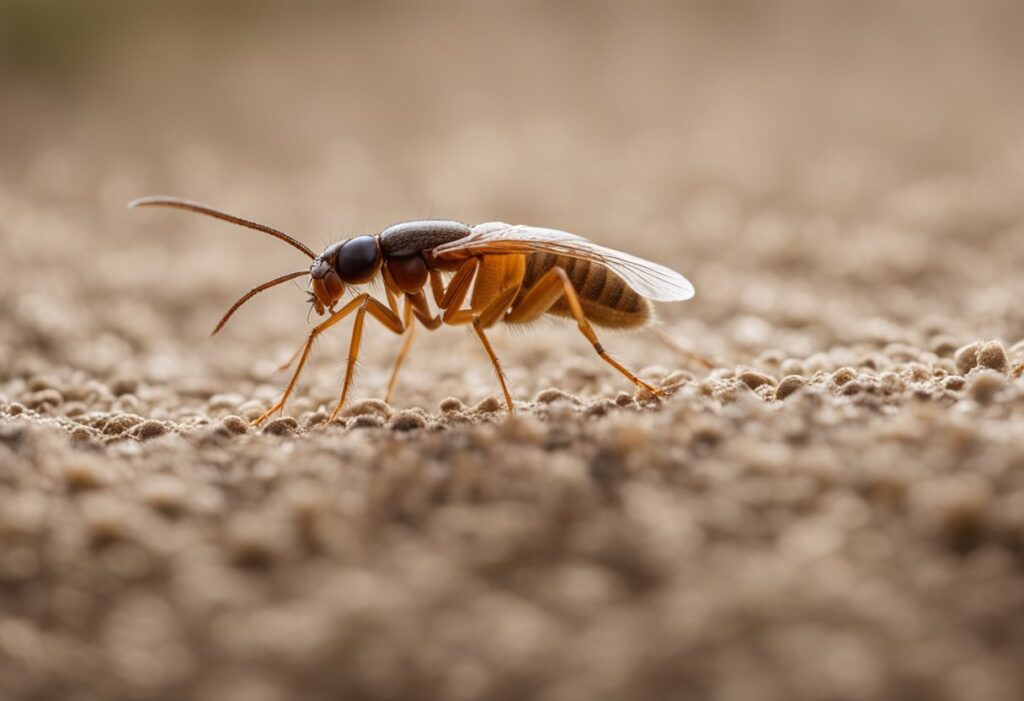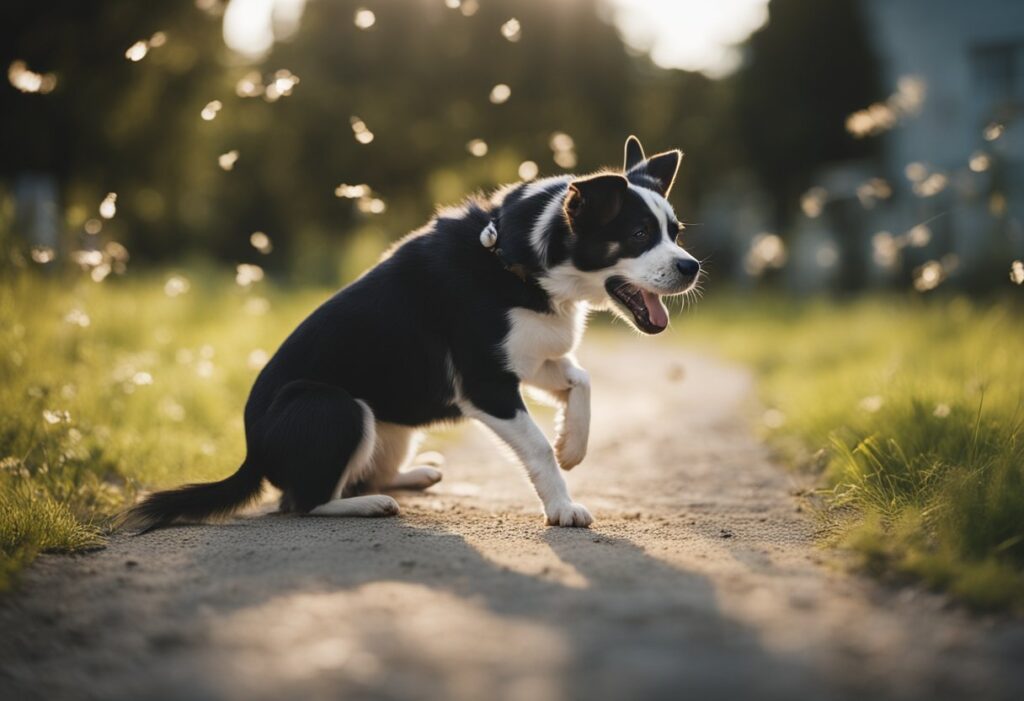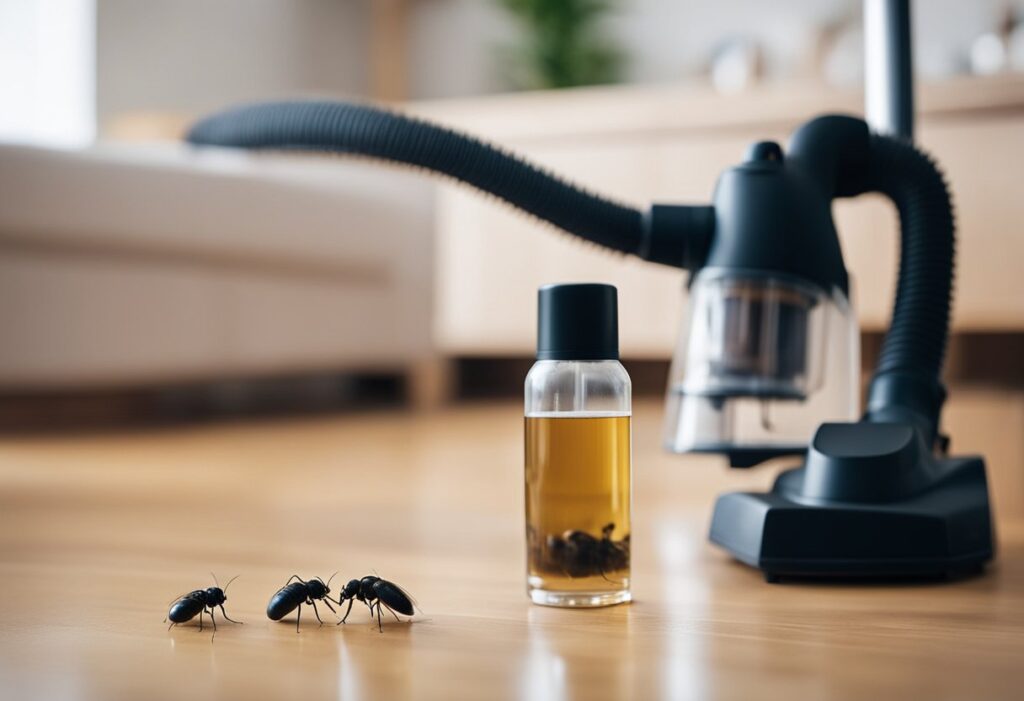Fleas are a common problem for pet owners, and they can be a nuisance to both pets and humans. Fleas are small, wingless insects that feed on the blood of animals and humans. They are known for their ability to jump long distances and their fast reproduction rate, which can make them difficult to control.

Pet owners should be aware of the signs of flea infestations, such as excessive scratching, biting, and licking. Flea bites can cause skin irritation, hair loss, and even transmit diseases. It’s important to take preventative measures to avoid flea infestations, such as regular grooming, vacuuming, and treating pets with flea prevention products. Understanding flea facts and information can help pet owners better manage and prevent flea problems.
Understanding Fleas

Life Cycle of Fleas
Fleas have a complex life cycle that includes four stages: egg, larva, pupa, and adult. The entire life cycle can take as little as two weeks or as long as several months, depending on environmental conditions.
Flea eggs are laid on the host animal, but they can also fall off onto the ground, carpet, or furniture. The eggs hatch into larvae, which feed on organic matter such as flea feces and skin cells. After several molts, the larvae spin cocoons and enter the pupal stage. The pupal stage can last for several days to several weeks, and the adult flea emerges from the cocoon when it detects vibrations, heat, or carbon dioxide from a potential host.
Physical Characteristics
Fleas are small, wingless insects that are flattened from side to side. They have powerful hind legs that allow them to jump up to 150 times their own body length. Fleas are typically brown or reddish-brown in color, and they have a tough exoskeleton that makes them difficult to crush.
Fleas have specialized mouthparts that are adapted for piercing skin and sucking blood. They feed on the blood of their host animal, which can cause itching, irritation, and allergic reactions. Fleas are known to transmit diseases such as bubonic plague and murine typhus, although these diseases are relatively rare in modern times.
In conclusion, understanding the life cycle and physical characteristics of fleas is important for pet owners and anyone who may come into contact with these pests. By taking preventative measures and treating infestations promptly, it is possible to control flea populations and reduce the risk of disease transmission.
Flea Infestation in Pets

Symptoms of Flea Infestation
Flea infestations in pets can be quite uncomfortable and even painful for the animal. Some common symptoms of flea infestations in pets include excessive scratching, biting, and licking of the skin. Fleas can also cause skin irritations, such as redness and bumps, and can lead to hair loss in severe cases.
Another symptom of flea infestation in pets is the presence of flea dirt. Flea dirt is actually flea feces and appears as small black specks on the pet’s skin and fur. If you suspect your pet has fleas, it’s important to check for flea dirt as well.
Common Pets Affected
Fleas can infest a variety of pets, including cats, dogs, rabbits, and even ferrets. However, cats and dogs are the most commonly affected pets. Fleas can easily jump from one animal to another, so if you have multiple pets, it’s important to check all of them for fleas.
It’s also important to note that flea infestations can occur even in indoor pets. Fleas can hitch a ride on clothing or other animals and make their way into your home. It’s important to take preventative measures, such as regular flea treatments and vacuuming, to help prevent flea infestations in your pets and home.


Impact of Fleas on Pets

Health Risks
Fleas pose a multitude of health concerns for pets. Upon biting, fleas deposit saliva into the skin, triggering potential allergic responses. Flea allergy dermatitis may ensue in some animals, manifesting as intense itching, fur loss, and susceptibility to skin infections. Moreover, fleas serve as vectors for transmitting various ailments to pets, including tapeworm infestations and bacterial infections.
In severe infestations, pets can become anemic due to blood loss. This can be particularly dangerous for puppies and kittens, as they have a smaller blood volume and are more vulnerable to the effects of anemia.
Behavioral Changes
Pets with fleas may exhibit behavioral changes. They may become restless, irritable, and less active. They may also scratch excessively, bite at their skin, and lick or chew their paws. These behaviors can be a sign of discomfort and can also lead to further skin irritation and infection.
In addition, pets with fleas may become less social and avoid interaction with people and other animals. This can lead to stress and anxiety, which can further impact their overall health and well-being.
Overall, it is important for pet owners to take preventative measures to protect their pets from fleas. Regular grooming, flea treatments, and keeping the home and yard clean can help reduce the risk of infestation and minimize the impact of fleas on pets.
Preventing Flea Infestations

Fleas can be a nuisance for both pets and their owners. Fortunately, there are several measures that can be taken to prevent flea infestations.
Home Prevention Measures
Keeping a clean and tidy home is the first step in preventing flea infestations. Regular vacuuming of carpets, furniture, and pet bedding can help remove flea eggs and larvae. It is important to dispose of the vacuum bag or empty the canister outside of the home to prevent any fleas from escaping.
Washing pet bedding and blankets in hot water and drying them on high heat can also help kill any fleas or eggs that may be present. Additionally, keeping the yard and outdoor areas well-maintained can help prevent fleas from entering the home.
Pet-Specific Prevention Methods
Preventing fleas on pets is crucial in preventing flea infestations. There are several methods that can be used to keep pets flea-free.
Regular grooming and bathing can help remove any fleas or flea dirt from the pet’s coat. Flea combs can also be used to remove any fleas or eggs that may be present.
Using flea preventatives such as topical treatments, oral medications, or flea collars can also help prevent fleas from infesting pets. It is important to follow the instructions provided by the product manufacturer and to consult with a veterinarian before using any flea preventatives.
By implementing these preventative measures, pet owners can help keep their homes and pets flea-free.
Treating Flea Infestations
Over-the-Counter Treatments
Over-the-counter flea treatments are widely available and can be effective in treating mild to moderate flea infestations. These treatments come in various forms, including sprays, powders, shampoos, and spot-on treatments. They contain active ingredients such as pyrethrin, permethrin, or fipronil, which kill adult fleas and prevent their eggs from hatching.
It is important to carefully read and follow the instructions on the product label before applying any over-the-counter flea treatment. Failure to do so may result in ineffective treatment or even harm to your pet.
Professional Pest Control Services
For severe or persistent flea infestations, professional pest control services may be necessary. Pest control professionals have access to more powerful and specialized treatments that can eradicate fleas from your home and yard.
Professional pest control treatments may include fogging, spraying, or baiting. These treatments are typically more expensive than over-the-counter options, but they are more effective in eliminating fleas and preventing future infestations.
It is important to choose a reputable pest control company and to follow their instructions carefully to ensure the safety of your pets and family.
Myths and Misconceptions About Fleas
Fleas are a common problem for pet owners and can be a nuisance to deal with. However, there are many myths and misconceptions about fleas that can make it difficult to properly prevent and treat them. Here are some of the most common misconceptions about fleas:
- Myth 1: Fleas only affect pets that go outside. While outdoor pets are more likely to come into contact with fleas, indoor pets can also be affected. Fleas can be brought into the home on clothing, shoes, or other pets.
- Myth 2: Fleas only bite pets. Fleas will bite any warm-blooded animal, including humans. While pets are often the primary target, humans can also experience flea bites.
- Myth 3: Fleas are easy to see on pets. Fleas are small and can be difficult to spot on pets, especially those with thick fur. The best way to check for fleas is to use a flea comb and look for flea dirt (small black specks) on the comb.
- Myth 4: Fleas only live on pets. Fleas can also live in carpets, bedding, and furniture. It’s important to treat the entire home when dealing with a flea infestation.
- Myth 5: Fleas are only a problem in the summer. While fleas are more common in the warmer months, they can survive year-round in warm indoor environments.
By understanding the truth about fleas and dispelling these common myths, pet owners can better prevent and treat flea infestations. Regular flea prevention and treatment is key to keeping pets and homes flea-free.
Conclusion
In conclusion, fleas are a common problem for pet owners and can be difficult to get rid of. It is important to take preventative measures to avoid infestations, such as regularly grooming pets and keeping the home clean.
If a flea infestation does occur, there are a variety of treatment options available, including topical treatments, oral medications, and flea collars. It is important to consult with a veterinarian to determine the best course of action for your pet.
Fleas can also carry diseases and pose a risk to both pets and humans. It is important to monitor pets for signs of flea infestations and seek treatment promptly if necessary.
Overall, by taking preventative measures and seeking treatment when necessary, pet owners can keep their pets and homes flea-free.





















